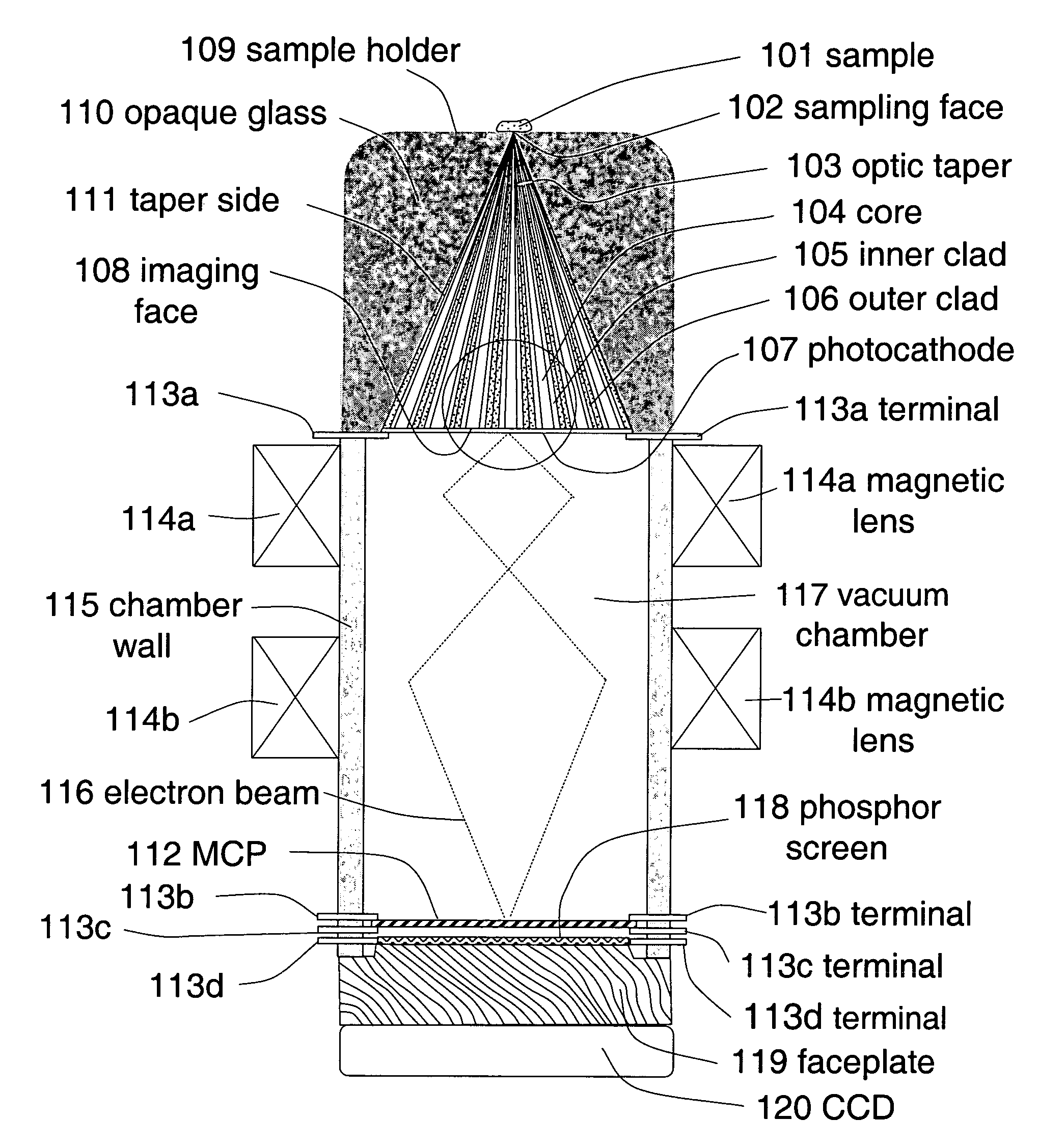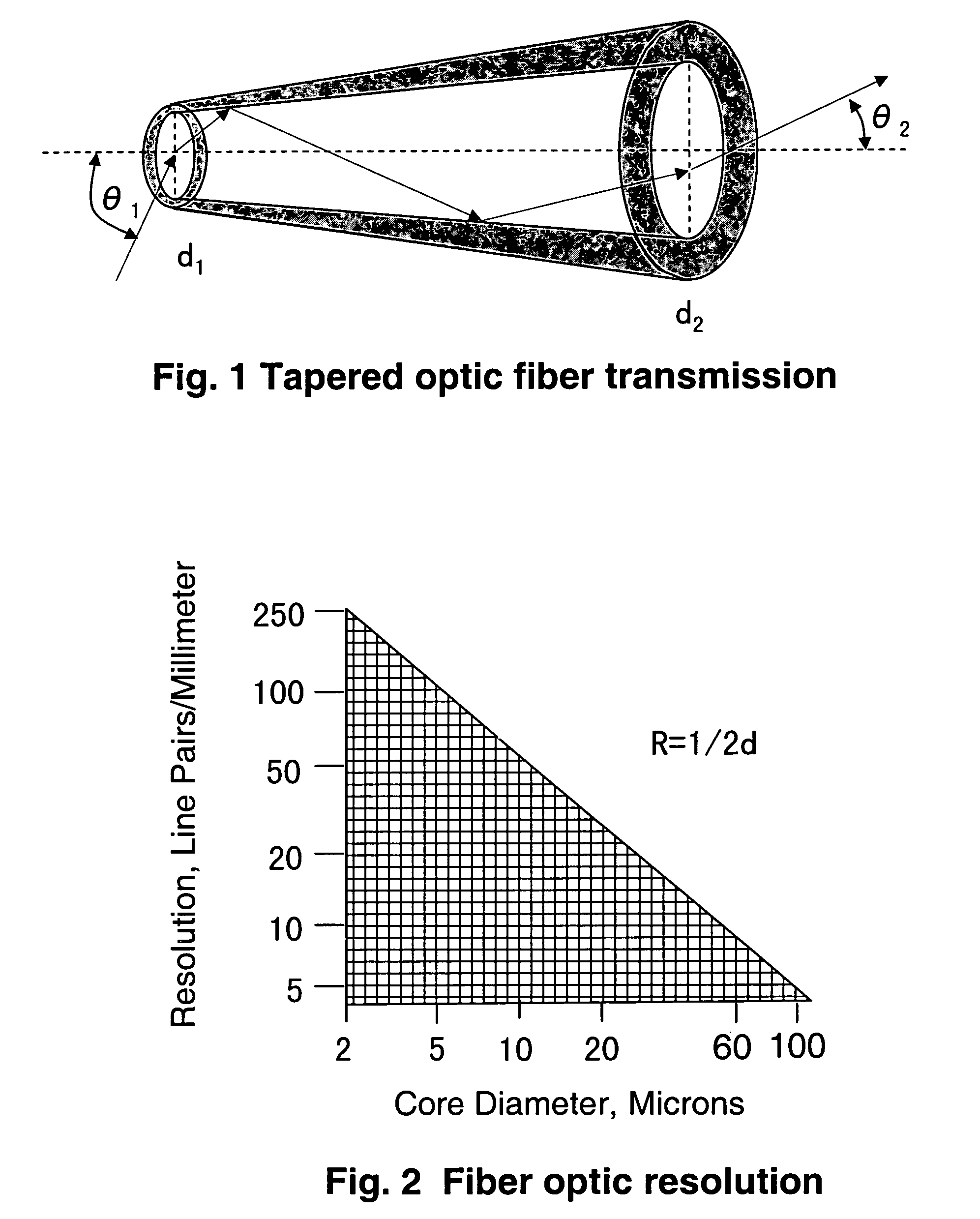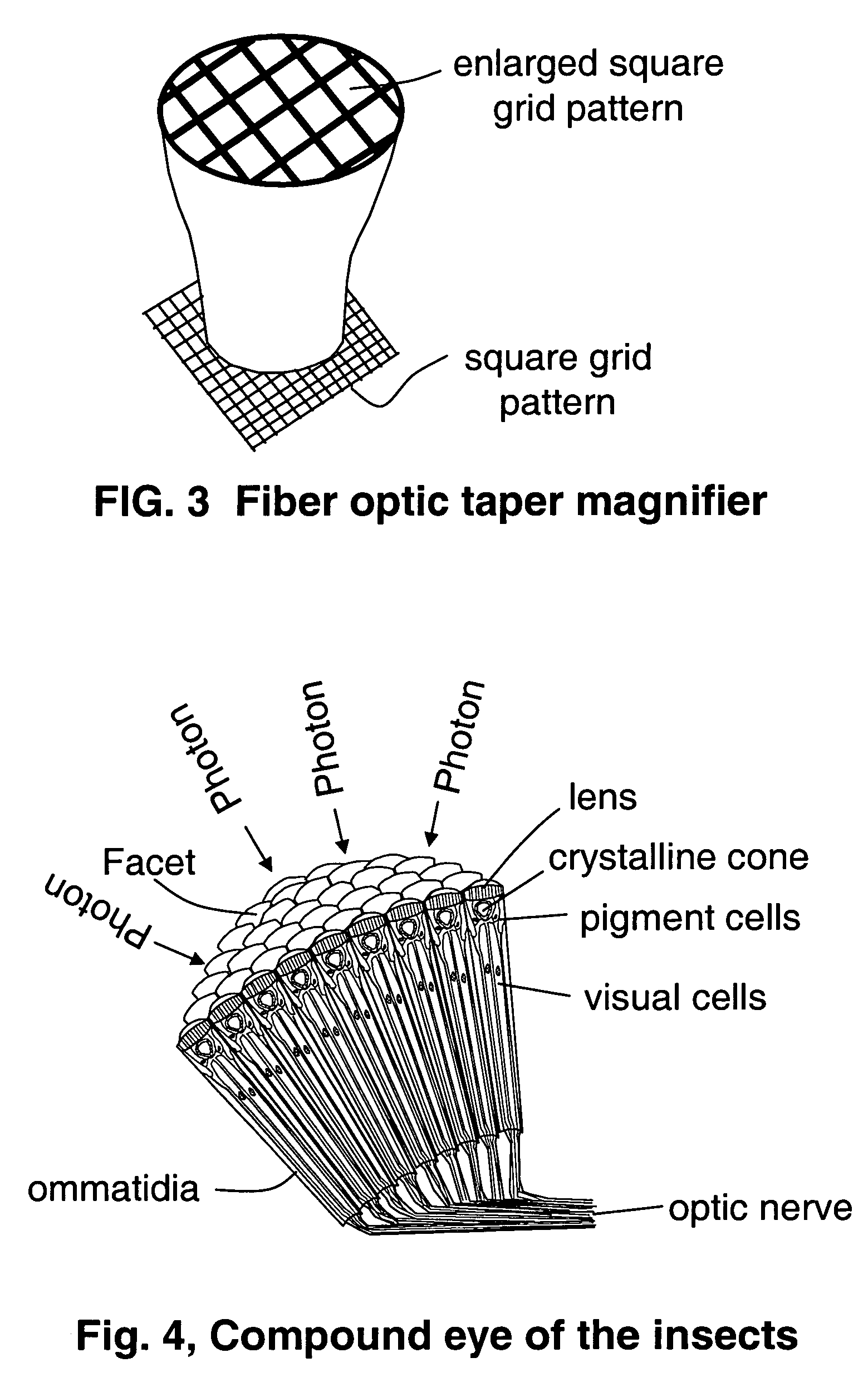Contact-field optical microscope
a contact-field optical microscope and microscope technology, applied in the field of fiber optics, can solve the problems of limiting the resolution of diffraction effects, unable to avoid the interference of the medium between the sample and the image detector, and difficulty in monitoring the dynamic variation of the microscopic state of energy in the nanometer range of samples
- Summary
- Abstract
- Description
- Claims
- Application Information
AI Technical Summary
Benefits of technology
Problems solved by technology
Method used
Image
Examples
Embodiment Construction
[0114]Three embodiments of the invention relating to visible light, infrared and UV, X-ray, charged particle contact-field optical microscopes have been described in detail with reference to the FIGS. 11A, 11B, 11C, 11D, 11E, 11F, 12A, 12B, 12C, 13A and 13B.
Visible Light Contact-Field Optical Microscope (FIGS. 11A, 11B, 11C, 11D, 11E, 11F)
[0115]FIG. 11A is a schematic diagram of main portions of a contact-field optical microscope working at the range of visible light.
[0116]In this embodiment, the microscope comprises a fiber optical taper 103, a photocathode 107, a vacuum chamber 117, magnetic lenses 114a and 114b, a micro-channel plate (MCP) image intensifier 112, an image display phosphor screen 118, a high voltage power supply for MCP image intensifier, an electronic control circuit for magnetic lenses, a faceplate 119 and a CCD 120. The side 111 of the optical taper 103 is embedded in a light and radiation absorbing dark colored opaque glass 110 to prevent background light and r...
PUM
 Login to View More
Login to View More Abstract
Description
Claims
Application Information
 Login to View More
Login to View More - R&D
- Intellectual Property
- Life Sciences
- Materials
- Tech Scout
- Unparalleled Data Quality
- Higher Quality Content
- 60% Fewer Hallucinations
Browse by: Latest US Patents, China's latest patents, Technical Efficacy Thesaurus, Application Domain, Technology Topic, Popular Technical Reports.
© 2025 PatSnap. All rights reserved.Legal|Privacy policy|Modern Slavery Act Transparency Statement|Sitemap|About US| Contact US: help@patsnap.com



